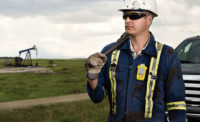Public utility workers in the United States work tirelessly to ensure that our public buildings and facilities are able to provide essential services to our communities. These skilled professionals maintain and repair local infrastructure such as water and plumbing systems, electricity, heating, and building and landscaping maintenance. While they play a vital role in keeping our communities running smoothly, they also face occupational safety risks due to the nature of their work, which often requires them to work long, late hours and may involve working alone or in isolation.
What is a lone worker?
A lone worker is an individual who works without close supervision or the presence of coworkers, either in a situation where help is not readily available or in an environment where they may be isolated from others. This could include working in a remote location, working with members of the public while not being accompanied by coworkers, or working in confined spaces where access to help is limited. Lone workers can be found in a variety of industries and may perform a range of tasks, from working in forests or on buildings to operating heavy machinery or performing maintenance in confined spaces. Regardless of the specific industry or job, lone workers face unique occupational risks due to their isolation from others.
The safety legislation and regulations that protect lone workers can vary from jurisdiction to jurisdiction and from industry to industry. Because it is different across the states, it is also more difficult to stay up to date on lone worker safety legislation. However, in many cases, the safety hazard mitigation steps below can help employers comply with their local lone worker laws.
What safety challenges and hazards do they face?
Isolated, confined work spaces
Utility workers often face the risk of working in confined spaces, such as water tunnels, trenches, culverts, and storage tanks. These spaces can be particularly tight and may not have room for another worker, leaving those working inside isolated and vulnerable if they need urgent help. While these jobs may not necessarily be considered "lone work," the physical barrier between the worker and access to assistance means that they are effectively working alone. This can pose significant risks to their safety and well-being.
Dangerous heights and falls
Electricity is an essential part of our daily lives and electrical workers play a vital role in ensuring that it is delivered safely and reliably. Unfortunately, working with electricity also comes with significant risks. Electrical workers often work at great heights, where a fall can be fatal. They are also at risk of arc flash events, which can cause severe burns and even limb loss. Despite these dangers, electrical workers continue to perform their jobs with dedication and professionalism, ensuring that the electricity that powers our homes and communities is delivered safely and efficiently.
Drowning
Water workers who work alone around tanks, reservoirs, culverts, and tunnels face the risk of drowning. Even a few inches of water can be deadly if an employee is injured and unconscious, so it is especially important for these workers to take extra precautions when working around water. Drowning is a real threat for workers who are isolated and do not have immediate access to assistance in the event of an emergency.
Violent members of the public
Have you ever found yourself stuck in traffic because of repairs being made to traffic lights? This type of work is typically carried out by utility workers. Although much of their work is behind the scenes, these professionals often need to work in public spaces and on roadways, which can expose them to the risk of confrontation with frustrated or angry individuals who may pose a threat to their safety. Despite the important role that utility workers play in keeping our communities running smoothly, they face a range of occupational hazards, including the risk of violence from members of the public.
Work travel and accidents
Utility workers are sometimes required to travel from jobsite to jobsite, making the vulnerable on the road. The Network of Employers for Traffic Safety says that over 1,200 American workers driving or riding in a vehicle on a public road while at work died in crash, making up 24% of all work-related fatalities. Depending on how many hours per week the employees are on the road, this could be a significant occupational hazard.
How can you mitigate these occupational hazards and risks?
Maintaining a safe workplace is a constant challenge for employers. In order to create the safest environment possible, they must be vigilant in identifying and addressing hazards. In the event of an emergency, it is important for both employers and employees to be prepared and to have a plan in place for responding effectively.
To ensure the safety of their employees, employers should be proactive in implementing measures such as incident reporting and trend monitoring. In addition, there are certain proactive safety measures that should be in place in any safe workplace, including:
Safety training
Providing your employees with training for potential emergency situations can greatly reduce the risk of injuries and fatalities, while also increasing peace of mind for all involved. Safety training can also serve as a valuable team building opportunity, bringing everyone together to focus on important safety issues. By investing in the safety of your employees, you can create a safer and more cohesive work environment.
Safety check-ins
Whether they’re manually communicating to their employer that they are ok or if they’re using an automated app, proactive check-ins from the lone working confirming their safety are one of the most effective, least-invasive methods of monitoring employees’ safety. Regarding dangerous work situations such as hazardous weather, the employee will need to check in at shorter intervals to demonstrate that they are ok.
Safety technology
Budget permitting, safety technologies and devices should also be considered when improving the security of your lone workers. Common devices like panic buttons can be effective for employees working around the public, but devices utilizing sensors and wearables are the future of safety technology, monitoring everything from dangerous radiation exposure and temperatures to the worker’s heartrate and stress levels.
Safety culture
Ultimately, the biggest OHS goal that any employer should have is to build and maintain a strong safety culture that will not only protect their people from physical and psychological harm, but protect the company from litigation and reputational damage.
A strong safety culture is a place where employees will bring attention to potential safety hazards and concerns, without fear of repercussions from the company or their coworkers. Within this culture, the employer welcomes and rewards those who speak up about safety issues so that these issues are addressed before they hurt anyone. But most importantly, it’s a place where people will want to stay and work because they will feel cared for and a priority for the organization.




